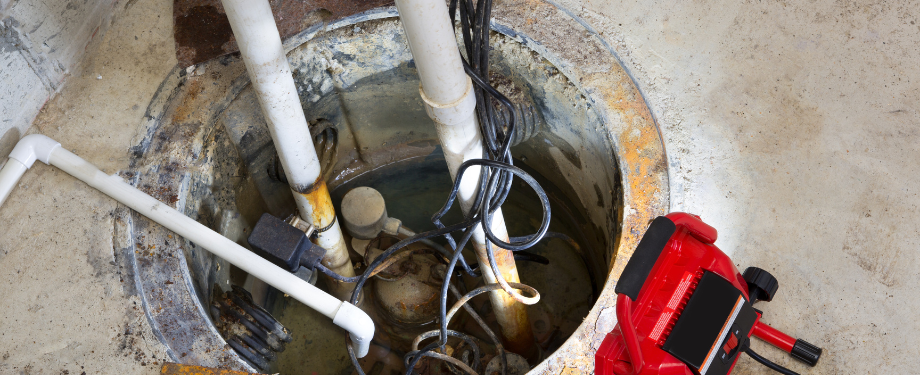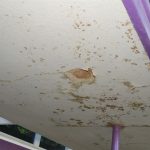No matter whether a homeowner lives in a rainy part of the country or a drought-prone one, a sump pump is the first line of defense against basement flooding. Any of the following common sump pump issues should be handled promptly to ensure continual protection.
Homes are especially vulnerable to plumbing leaks as well as storms. Water pipes can spring a leak, which will lead to significant water damage or a flood. On the other hand, thunderstorms have the ability to unleash a fury of moisture and cause flooding in the basement.
Sump pumps drain floodwater via an external discharge pipe and keep the basement dry. As an important piece of emergency equipment, the sump pump should be properly maintained at all times. Mechanical problems must be resolved right away to avoid high water damage repair costs.
A sump pump will fail for numerous reasons. Built with mechanical parts, the sump pump can malfunction over time. Since sump pumps rely on a power source, power outages can cause the pump to fail. The underperformance of the sump pump may be due to improper installation.
Poorly designed and cheaply built sump pumps can also cause a range of issues. A high-quality sump pump with a lid is a homeowner’s most dependable weapon against basement flooding. Still, the following common problems can wreak havoc when they appear.
Problem 1: Power Outages
Torrential thunderstorms and other types of bad weather can lead to power failures. The combination of excess rain and a lack of power immobilizes the sump pump. When the sump pump loses its ability to drain water during the storm, the basement is likely to flood.
Two solutions can prevent a sump pump from failing during a loss of power. Homeowners are advised to purchase and install a high-capacity, battery-operated backup sump pump. The backup pump provides several hours of protection from water damage in the event the main pump fails.
A second option is to purchase a backup generator. Homeowners who lose power during the height of a storm can manually switch on the backup generator to restore power and allow the sump pump to continue running. Portable generators are ideal for homeowners.
Problem 2: Overwhelmed Pump
A sump pump that is not the right size or features less-than-adequate horsepower will fail when water levels are exceedingly high. Shortened lifespans and overwork are a result of sump pumps that are too big. A shortened lifespan and underwork occur when sump pumps are too small.
At a minimum, homeowners should purchase a 1/3 horsepower sump pump with the ability to pump 35 gallons of water per minute. Homes that rest on a high water table should be fitted with a 1/2 horsepower sump pump that can pump 60 gallons of water every minute.
Problem 3: Clogged Sump Pump
An open sump pump (one that does not feature a lid) can become dirty over time. Debris and silt can accumulate in the pit in which the sump pump sits, or the mechanical parts can eventually become clogged. The float switch can also jam.
Regular inspections are necessary to determine when the sump pump needs to be repaired or replaced. When it is time to choose a new one, opt for a sump pump with an airtight sealed lid. The lid prevents debris from falling in and water from evaporating back into the basement.
Problem 4: Pump Running Nonstop
A sump pump that runs continuously, regardless of weather conditions, is likely to burn out. The sump pump switch can fail; the sump pump pit may be too small and trigger the pump to work overtime; or a broken check valve permits water to flow back into the pit.
All these reasons can cause a sump pump to run continuously. A pump that runs nonstop under normal weather conditions is more than likely to fail when rainstorms hit. Homeowners are advised to take precautions and hire a technician to conduct a sump pump inspection.
Problem 5: Blocked Discharge Pipe
The sump pump’s discharge line should be free of clog-causing debris. A clogged pipe will send the floodwater back down the pipe and into the basement. During subfreezing temperatures, the discharge pipe can also freeze and lead to water flowing back into the home.
Homeowners who install a grate over the opening of the pipe will prevent debris and small pests from causing a blockage. Installing specialty discharge lines allows the floodwater to exit the basement in the event the main discharge line becomes frozen (preventing a frozen pipe is unrealistic).
Problem 6: Lack of Upkeep
Like any essential device, a sump pump must be regularly maintained in order to function at critical times. Quarterly maintenance includes ensuring the float is unrestricted, cleaning the vents in the sump pump, and cleaning the air holes along the discharge line.
Problem 7: Wear and Tear
A sump pump can endure for 10 years or more. Normal wear and tear over the years, however, can lead to eventual failure. Homeowners are advised to replace a sump pump after 10 years to ensure the pump performs at maximum efficiency.
Walking into a flooded basement after a sump pump failure is every homeowner’s nightmare. Fortunately, homeowners who consult a local water damage restoration professional can remedy the water damage efficiently.
Experienced technicians will arrive promptly after your call to assess the extent of the flood damage. They extract all the excess moisture and thoroughly dry the premises, and they will also decontaminate the area as a final step in the flood damage cleanup process.




